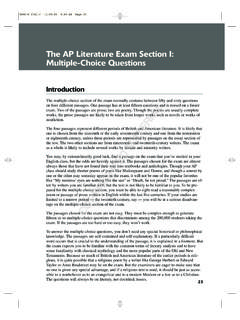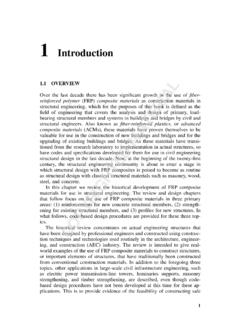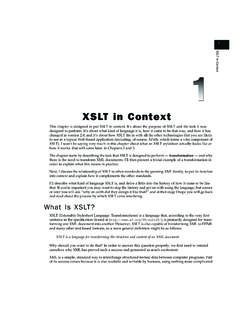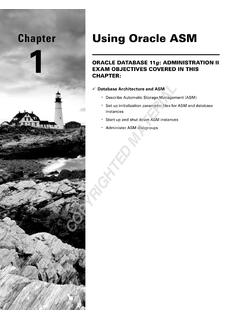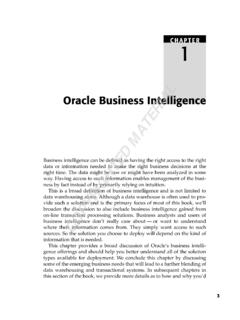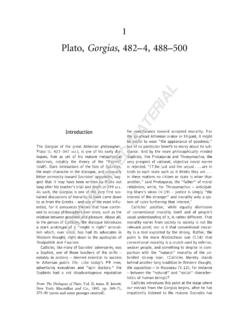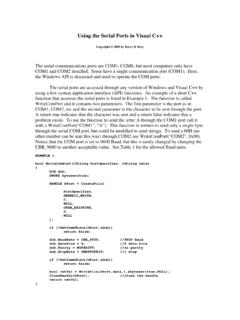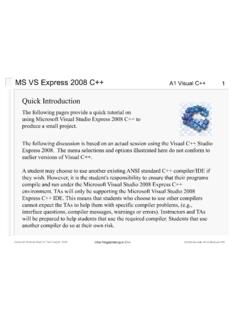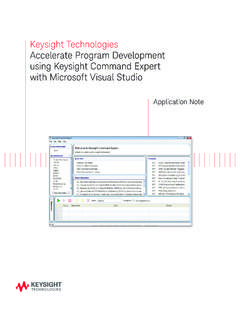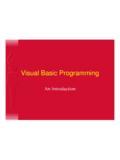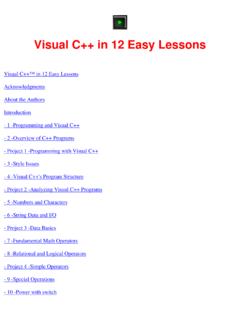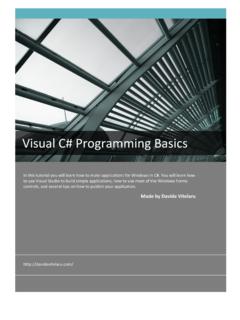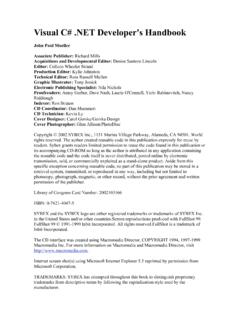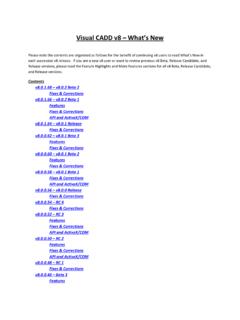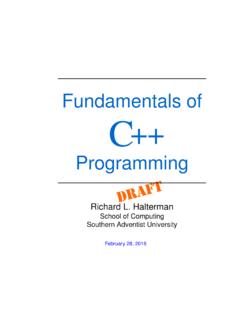Transcription of Programming with Visual C++ 2010
1 1 Programming with Visual C++ 2010 WHAT YOU WILL LEARN IN THIS CHAPTER: What the principal components of Visual C++ 2010 are What the .NET Framework consists of and the advantages it off ers What solutions and projects are and how you create them About console programs How to create and edit a program How to compile, link, and execute C++ console programs How to create and execute basic Windows programs Windows Programming isn t diffi cult. Microsoft Visual C++ 2010 makes it remarkably easy, as you ll see throughout the course of this book.
2 There s just one obstacle in your path: Before you get to the specifi cs of Windows Programming , you have to be thoroughly familiar with the capabilities of the C++ Programming language, particularly the object - oriented aspects of the language. Object - oriented techniques are central to the effectiveness of all the tools provided by Visual C++ 2010 for Windows Programming , so it s essential that you gain a good understanding of them. That s exactly what this book provides. This chapter gives you an overview of the essential concepts involved in Programming applications in C++.
3 You ll take a rapid tour of the integrated development environment (IDE) that comes with Visual C++ 2010 . The IDE is straightforward and generally intuitive in its operation, so you ll be able to pick up most of it as you go along. The best way to get familiar with it is to work through the process of creating, compiling, and executing a simple program. So power up your PC, start Windows, load the mighty Visual C++ 2010 , and begin your journey. COPYRIGHTED MATERIAL2 x CHAPTER 1 Programming with Visual C++ 2010 THE.
4 NET FRAMEWORK The .NET Framework is a central concept in Visual C++ 2010 as well as in all the other .NET development products from Microsoft. The .NET Framework consists of two elements: the Common Language Runtime (CLR) in which your application executes, and a set of libraries called the .NET Framework class libraries. The .NET Framework class libraries provide the functional support your code will need when executing with the CLR, regardless of the Programming language used, so .NET programs written in C++, C#, or any of the other languages that support the.
5 NET Framework all use the same .NET libraries. There are two fundamentally different kinds of C++ applications you can develop with Visual C++ 2010 . You can write applications that natively execute on your computer. These applications will be referred to as native C++ programs ; you write native C++ programs in the version of C++ defi ned by the ISO/IEC (International Standards Organization/International Electrotechnical Commision) language standard. You can also write applications to run under the control of the CLR in an extended version of C++ called C++/CLI.
6 These programs will be referred to as CLR programs , or C++/CLI programs . The .NET Framework is not strictly part of Visual C++ 2010 but rather a component of the Windows operating system that makes it easier to build software applications and Web services. The .NET Framework offers substantial advantages in code reliability and security, as well as the ability to integrate your C++ code with code written in over 20 other Programming languages that target the .NET Framework. A slight disadvantage of targeting the.
7 NET Framework is that there is a small performance penalty compared to native code, but you won t notice this in the majority of circumstances. THE COMMON LANGUAGE RUNTIME The Common Language Runtime (CLR) is a standardized environment for the execution of programs written in a wide range of high - level languages including Visual Basic, C#, and of course C++. The specifi cation of the CLR is now embodied in the European Computer Manufacturers Association (ECMA) standard for the Common Language Infrastructure (CLI) , the ECMA - 335, and also in the equivalent ISO standard, ISO/IEC 23271, so the CLR is an implementation of this standard.
8 You can see why C++ for the CLR is referred to as C++/CLI it s C++ for the Common Language Infrastructure, so you are likely to see C++/CLI compilers on other operating systems that implement the CLI. NOTE Information about all ECMA standards is available from - , and ECMA - 335 is currently available as a free download. The CLI is essentially a specifi cation for a virtual machine environment that enables applications written in diverse high - level Programming languages to be executed in different system environments without the original source code s being changed or replicated.
9 The CLI specifi es a standard intermediate language for the virtual machine to which the high - level language source code is compiled. with the .NET Framework, this intermediate language is referred to as Microsoft Intermediate Language (MSIL ). Code in the intermediate language is ultimately mapped to machine code by a just - in - time (JIT) compiler when you execute a program. Of course, code in the CLI intermediate language can be executed within any other environment that has a CLI implementation.
10 The CLI also defi nes a common set of data types called the Common Type System ( CTS ) that should be used for programs written in any Programming language targeting a CLI implementation. The CTS specifi es how data types are used within the CLR and includes a set of predefi ned types. You may also defi ne your own data types, and these must be defi ned in a particular way to be consistent with the CLR, as you ll see. Having a standardized type system for representing data allows components written in different Programming languages to handle data in a uniform way and makes it possible to integrate components written in different languages into a single application.
